Opened 1841 | ||
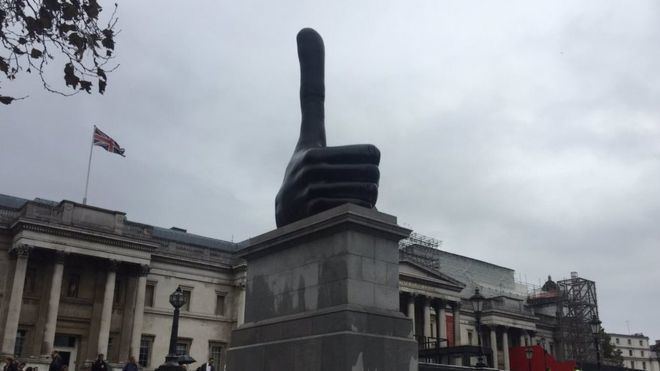 | ||
Similar Trafalgar Square, Hahn/Cock, Nelson's Column, Central London, Duke of York Column | ||
Man on trafalgar square fourth plinth gets trafalger square to boo bnp
The Fourth plinth is the northwest plinth in Trafalgar Square in central London. It was originally intended to hold an equestrian statue of William IV, but remained bare due to insufficient funds. For over 150 years the fate of the plinth was debated; in 1998, the Royal Society for the encouragement of Arts, Manufactures and Commerce (RSA) commissioned three contemporary sculptures to be displayed temporarily on the plinth. Shortly afterwards, Chris Smith, the then Secretary of State for Culture, Media and Sport commissioned Sir John Mortimer to conduct a public enquiry that sought opinions from public art commissioners, critics and members of the public as to the future of the plinth.
Contents
- Man on trafalgar square fourth plinth gets trafalger square to boo bnp
- Hans haacke gift horse fourth plinth trafalgar square london uk
- The plinths
- The Fourth Plinth Project 19992001
- The Fourth Plinth Commission 2005present
- Proposals for permanent statues
- Other uses
- Fourth Plinth Schools Awards
- References
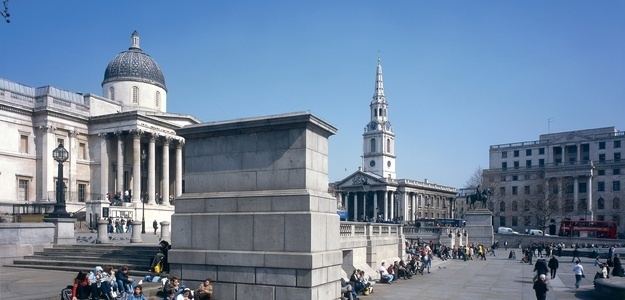
The final report recommended that the commissions remain a rolling programme of temporary artworks rather than settling permanently on one figure or idea to commemorate. In 2003, the ownership of Trafalgar Square was transferred from Westminster City Council to the Mayor of London and this marked the beginning of the Mayor of London’s Fourth Plinth Commission as it is now known.
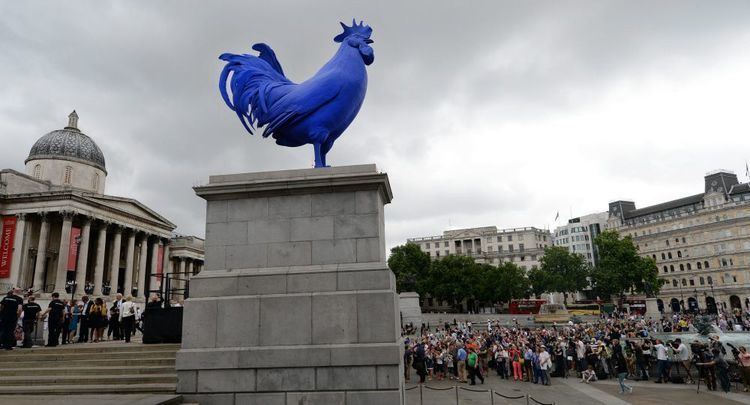
Hans haacke gift horse fourth plinth trafalgar square london uk
The plinths
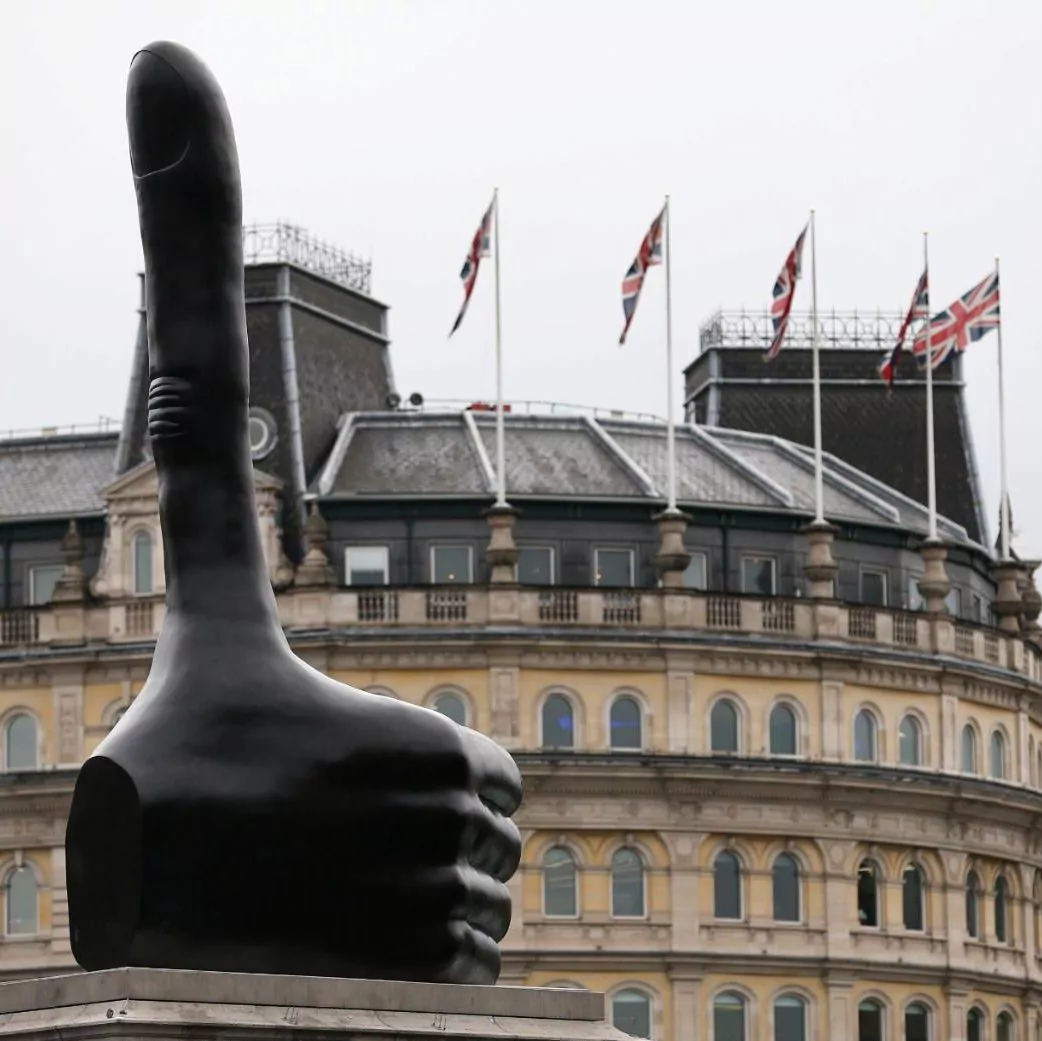
There is a plinth at each of the four corners of the square. The two southern plinths carry sculptures of Henry Havelock and Charles James Napier. The northern plinths are larger than those as they were designed to have equestrian statues, and indeed the northeastern plinth has one of George IV. The fourth plinth on the northwest corner, designed by Sir Charles Barry and built in 1841, was intended to hold an equestrian statue of William IV but remained empty due to insufficient funds.
The Fourth Plinth Project (1999–2001)
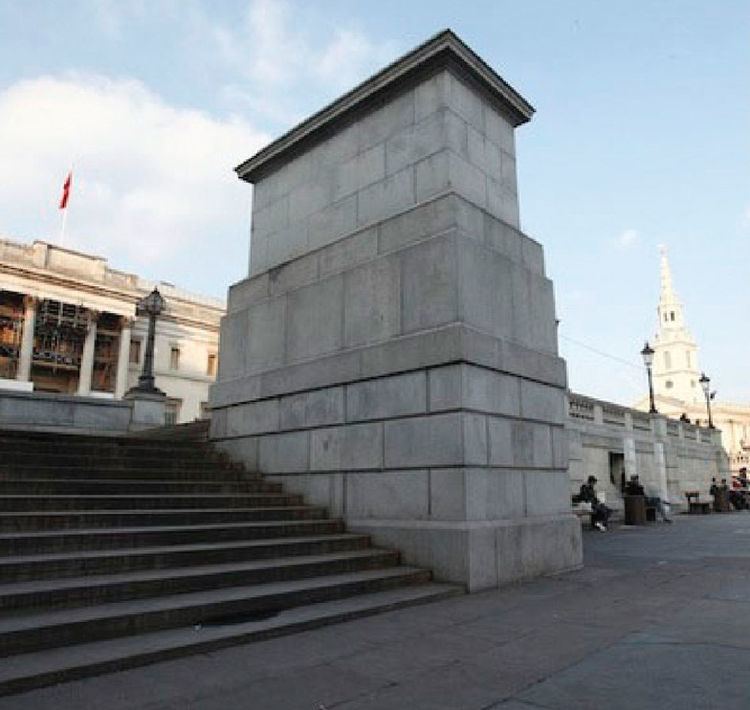
In 1998, the Royal Society of Arts (RSA) conceived the Fourth Plinth Project, which temporarily occupied the plinth with a succession of works commissioned and established by Cass Sculpture Foundation These were:
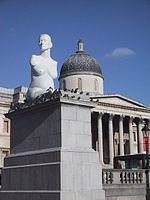
A committee convened to consider the RSA's late-1990s project concluded that it had been a success and "unanimously recommended that the plinth should continue to be used for an ongoing series of temporary works of art commissioned from leading national and international artists". After several years in which the plinth stood empty, the new Greater London Authority assumed responsibility for Trafalgar Square and the fourth plinth.
The Fourth Plinth Commission (2005–present)
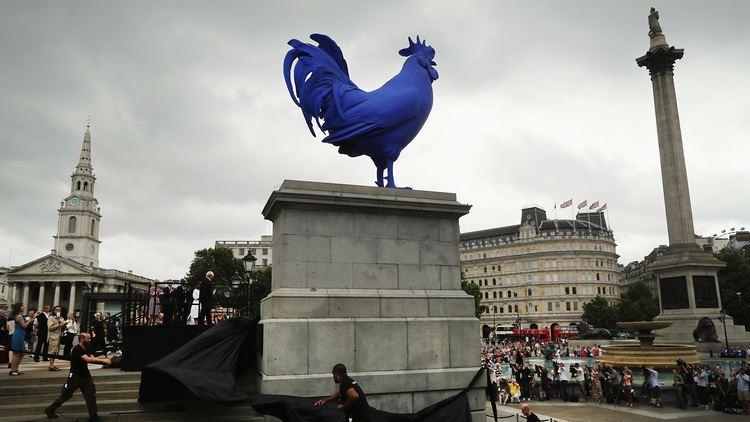
The Fourth Plinth Commission is led by the Mayor of London’s Culture Team, under the guidance of the Fourth Plinth Commissioning Group. The group is made up of specialist advisers appointed to guide and monitor the commissions for the plinth.
Under the stewardship of the Fourth Plinth Commissioning Group the following artworks have been commissioned:
Proposals for permanent statues
The best use of the fourth plinth remains the subject of debate and discussion:
Other uses
Commercial companies have used the plinth, usually without permission, as a platform for publicity stunts, including a model of David Beckham by Madame Tussauds during the 2002 FIFA World Cup. The London-based American harmonica player Larry Adler jokingly suggested erecting a statue of Moby-Dick, which would then be called the "Plinth of Whales". A television ident for the British TV station Channel 4 shows a CGI Channel 4 logo on top of the fourth plinth.
Fourth Plinth Schools Awards
The annual Fourth Plinth Schools Award is the education project within the Mayor of London’s Fourth Plinth Programme. The award uses the Fourth Plinth as an inspiration to engage primary and secondary schools in London to enter a competition that encourages creative thinking around past and present artworks displayed on the Fourth Plinth.
